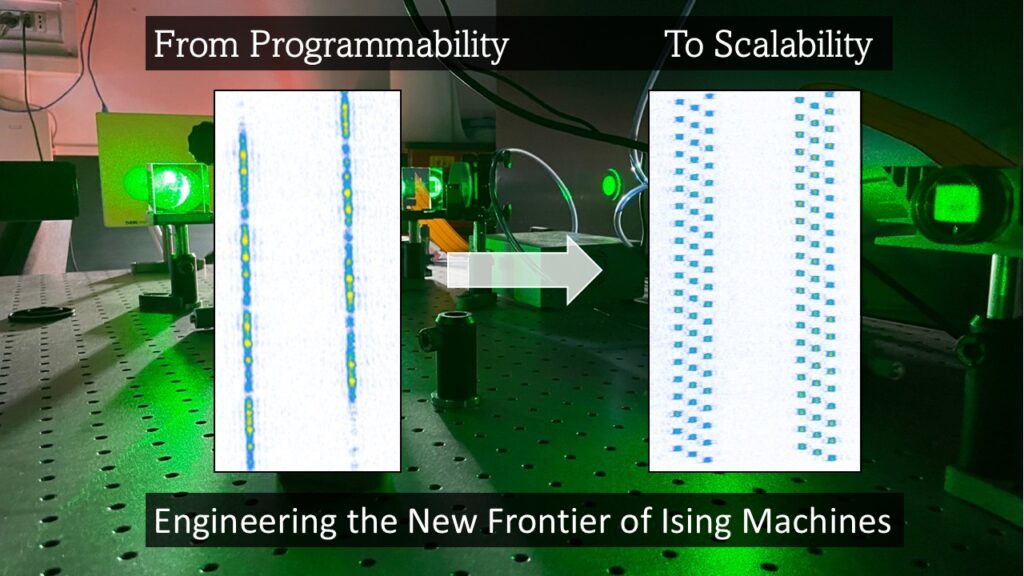by Daniele Veraldi, Sapienza University of Rome
Ising machines (IMs) are a novel class of computing hardware designed to efficiently solve complex combinatorial optimization problems, which are prevalent in fields such as logistics, finance, engineering, and artificial intelligence. These problems often require identifying the best solution from an exponentially large set of possibilities, posing significant challenges for traditional digital computers as the problem size grows.
The key advantage of IMs lies in their ability to perform ultrafast computations with significant energy efficiency, setting them apart from conventional von Neumann-based computing systems. Their design and operation are rooted in the Ising model of statistical physics, which describes how systems of interacting spins—or binary variables—naturally organize into low-energy states. By mapping optimization problems onto this model, IMs leverage their intrinsic dynamics to find optimal or near-optimal solutions efficiently.
IMs exhibit a wide range of architectures, each utilizing unique physical principles to implement the Ising model. Quantum annealers, for instance, harness quantum mechanical effects like superposition and tunneling to navigate solution spaces, potentially bypassing local minima. Optical and photonic IMs, on the other hand, employ the properties of light to perform ultrafast and energy-efficient computations. Digital and CMOS-based IMs rely on classical electronics to emulate spin behavior, offering robust and scalable solutions for practical applications.
This architectural diversity underscores the transformative potential of IMs but also presents challenges for comparing and evaluating devices built on fundamentally different principles. Standardized metrics are essential for assessing their performance, particularly in terms of scalability and programmability—two critical aspects that determine their utility for solving real-world optimization problems.
Scalability refers to the ability of an Ising machine to accommodate larger problems by increasing the number of spins and interactions it can handle. A highly scalable system allows for straightforward expansion without significant redesign or performance degradation. This is crucial for practical applications, as real-world optimization problems often involve thousands or even millions of variables. Scalability also encompasses the system’s ability to maintain efficient operation—both in terms of speed and energy consumption—as the problem size grows. An IM that struggles with scaling may become impractical for larger, real-world problems despite performing well on smaller instances.
Programmability, on the other hand, defines the range of problem types and graph structures that an Ising machine can represent and solve. This involves the flexibility of the IM to encode different types of interactions (e.g., complex weighted graphs or non-uniform coupling between spins) and to map diverse optimization problems effectively onto its hardware. A programmable IM can tackle a broader variety of applications, making it more versatile and valuable across industries.
Although scalability and programmability might appear to address distinct features, they are inherently interlinked. The programmability of an IM often imposes constraints on its scalability. For instance, a machine designed to handle highly complex and customizable interaction graphs might require intricate hardware or software, which could limit its ability to scale efficiently. Conversely, a highly scalable IM may achieve its capacity by simplifying the types of graphs or problems it supports, reducing its programmability.
Achieving a balance between scalability and programmability is one of the core challenges in designing Ising machines. An ideal IM would scale seamlessly to larger problem sizes while retaining the flexibility to encode a wide variety of optimization problems. However, trade-offs are often inevitable, and these two characteristics must be carefully optimized based on the intended applications of the machine. Thus, evaluating an IM’s performance requires a comprehensive understanding of how these factors interact and influence its overall capabilities.

